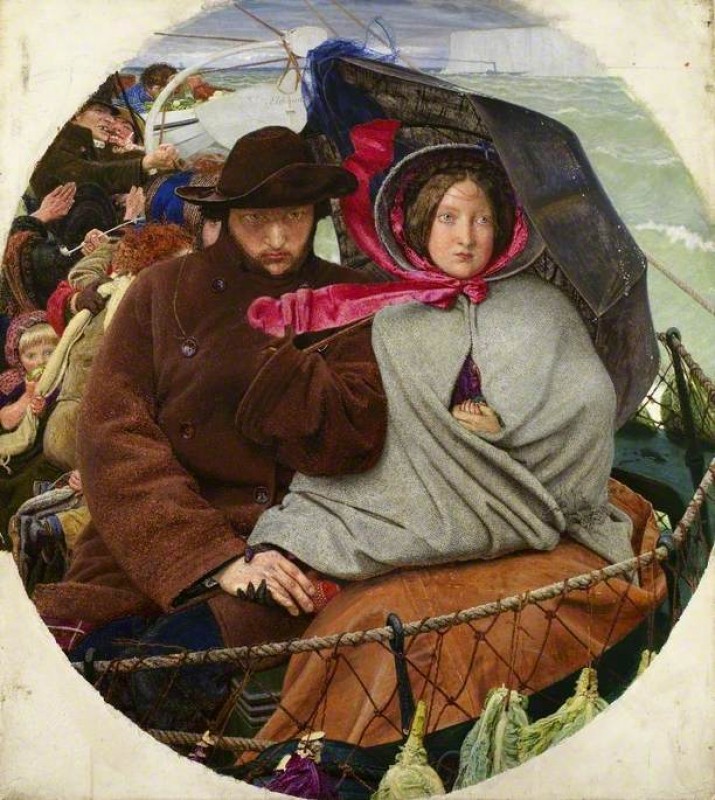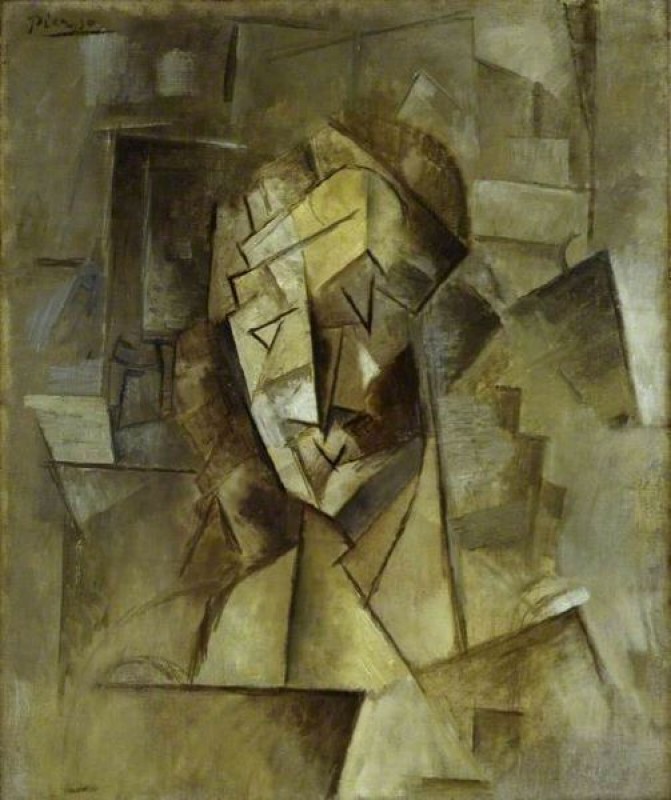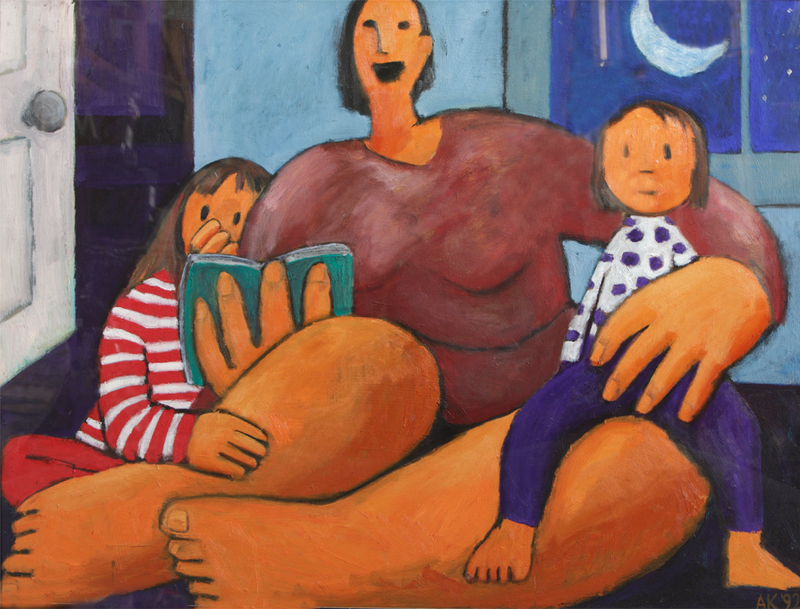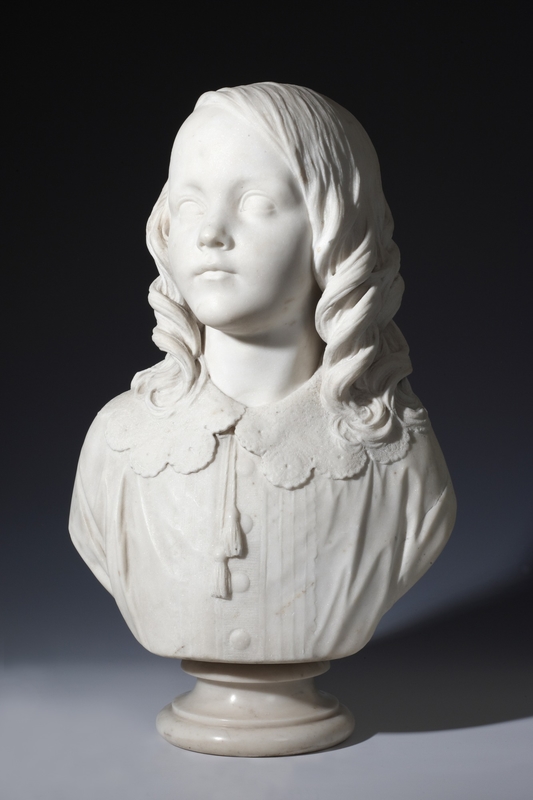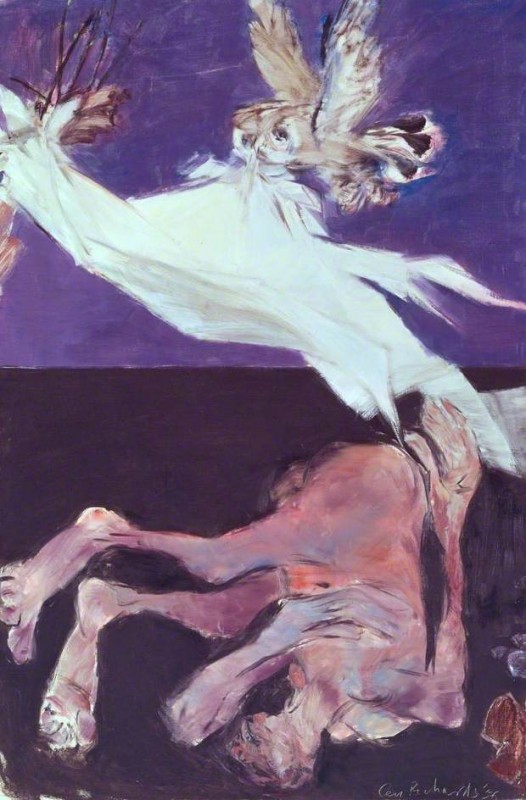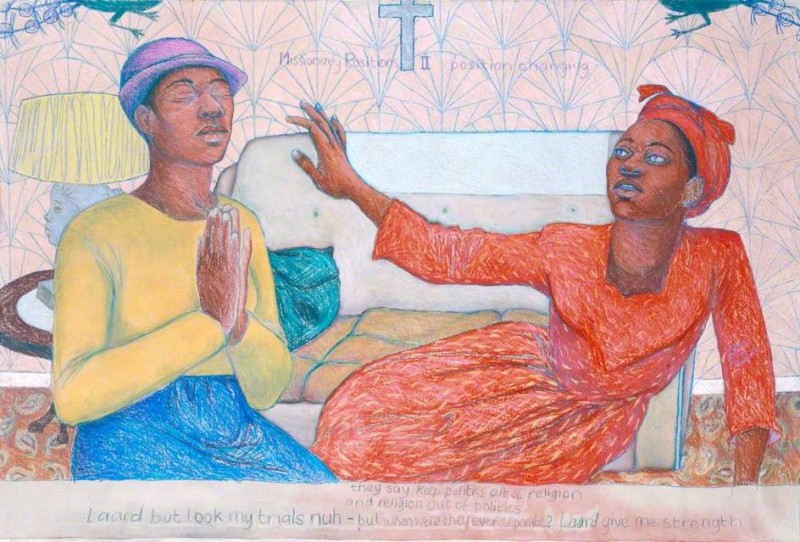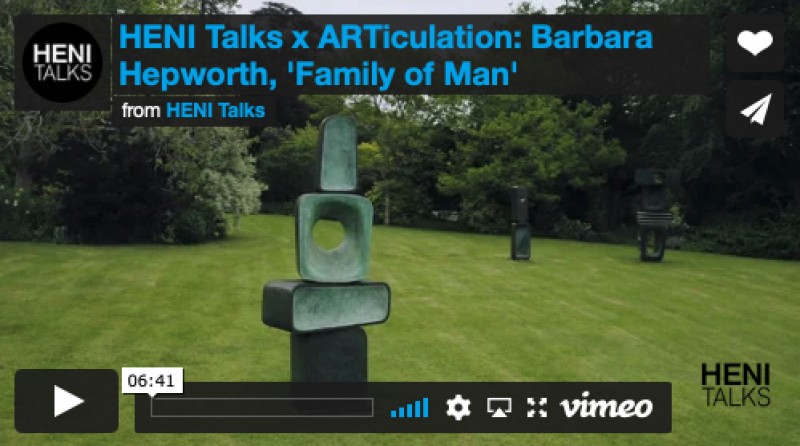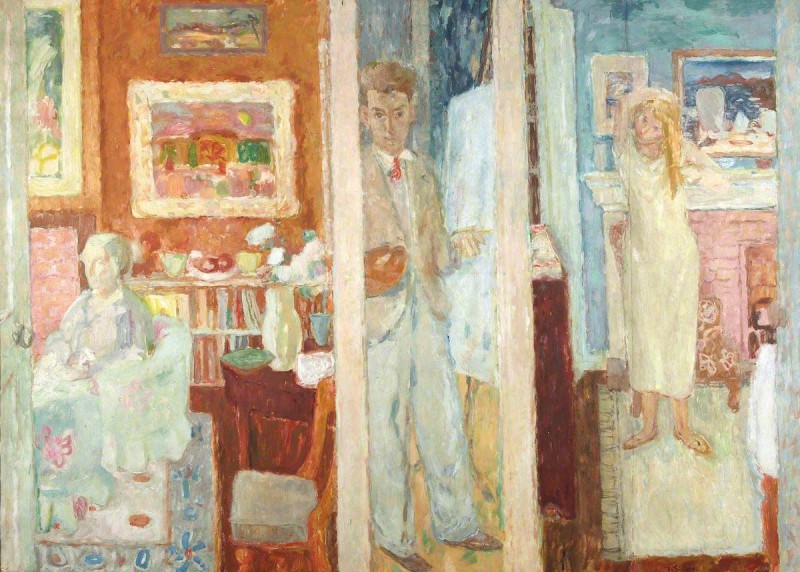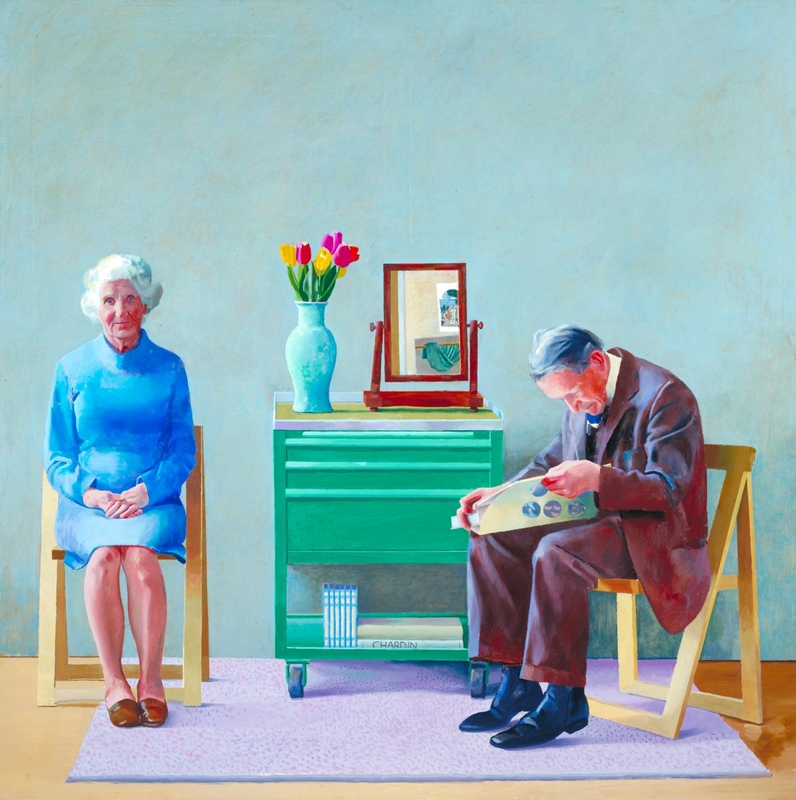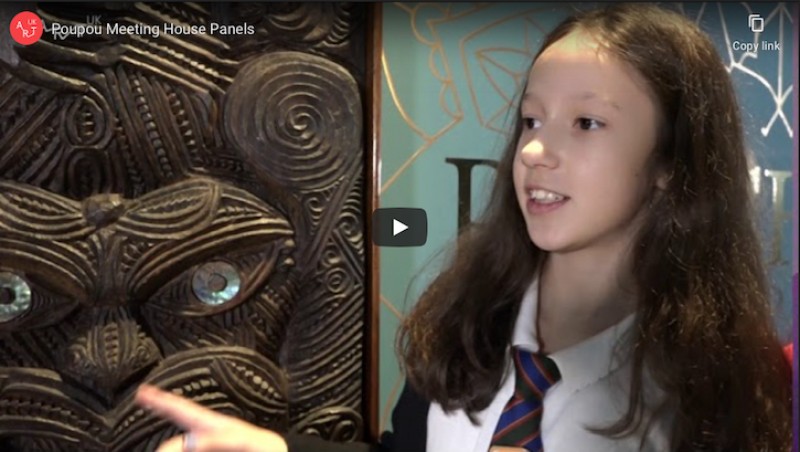'The Last of England' by Ford Madox Brown
This audio clip describes The Last of England by Ford Madox Brown (1821–1893).
It has been created for use as part of our primary school resource, The Superpower of Looking, in order to support pupils with blindness or visual impairment to take part in the lessons.
Explore the painting further in our resource, A journey across a stormy sea.
Full audio description text
Painted in 1855 by Ford Madox Brown – in oil paint on a panel 82.5 centimetres high and 75 centimetres wide – this image is circular, as though we are looking out to sea through a telescope. A man and a woman sit shoulder to shoulder in the back of a small crowded boat heading away from us. In their 30s, they stare grimly ahead huddled under a black umbrella that the man holds to shelter the woman from the sea spray wetting its surface. Other passengers are squashed in the body of the boat. A small child with blonde hair wears a pink knitted bonnet. A father figure can be identified by the long white stem of his clay pipe. Two men, one wearing a top hat, the other a straw hat, collapse with laughter in the front of the boat. Sailing ahead of them is another boat. The sea, glimpsed in the top-right quarter, is a cold green with low-crested waves, under an overcast sky. At the very top are white cliffs, giving the painting its title: The Last of England.
In the back of our boat, sitting on the right, the woman is wrapped in a grey tweed shawl, the hood pulled up over her bonnet. Its pink satin edge outlines her reddish-brown hair. Parted in the centre it frames the flawless skin of her long, anxious face. The ribbons of the pink bonnet are tied in a bow under her chin. Escaping, one is blown up and back against the inside of the umbrella – the other whips out sideways across the man's thick, brown double-breasted coat. The collar, turned up to his ears, hugs the line of his beard and his brown felt hat is crammed low on his head, the brim turned up. His white skin is ruddy, his eyes blue and distant.
His left arm, pressed against the woman, is bent up trapping the cane handle of the umbrella. His other arm lies across his lap, his bare hand resting in the woman's black-gloved hand. She grips so tightly, his little finger is bunched against the rest. His knuckles are turning purple. The woman's other hand is bare and held against her body. Her thumb is gripped by the tiny fingers of a baby beneath her cloak. A gap in the fastening gives us a glimpse and there's a tell-tale head-shaped bulge in the fabric where it passes over her left elbow.
In the foreground, thin metal posts with holes support a low rope rail strung with orange fishing net. Tied with the same twine along the length of the rope are cabbages. Most are green but one is a red cabbage, its stalk a creamy white where it's been chopped: perhaps provisions for the voyage ahead.
